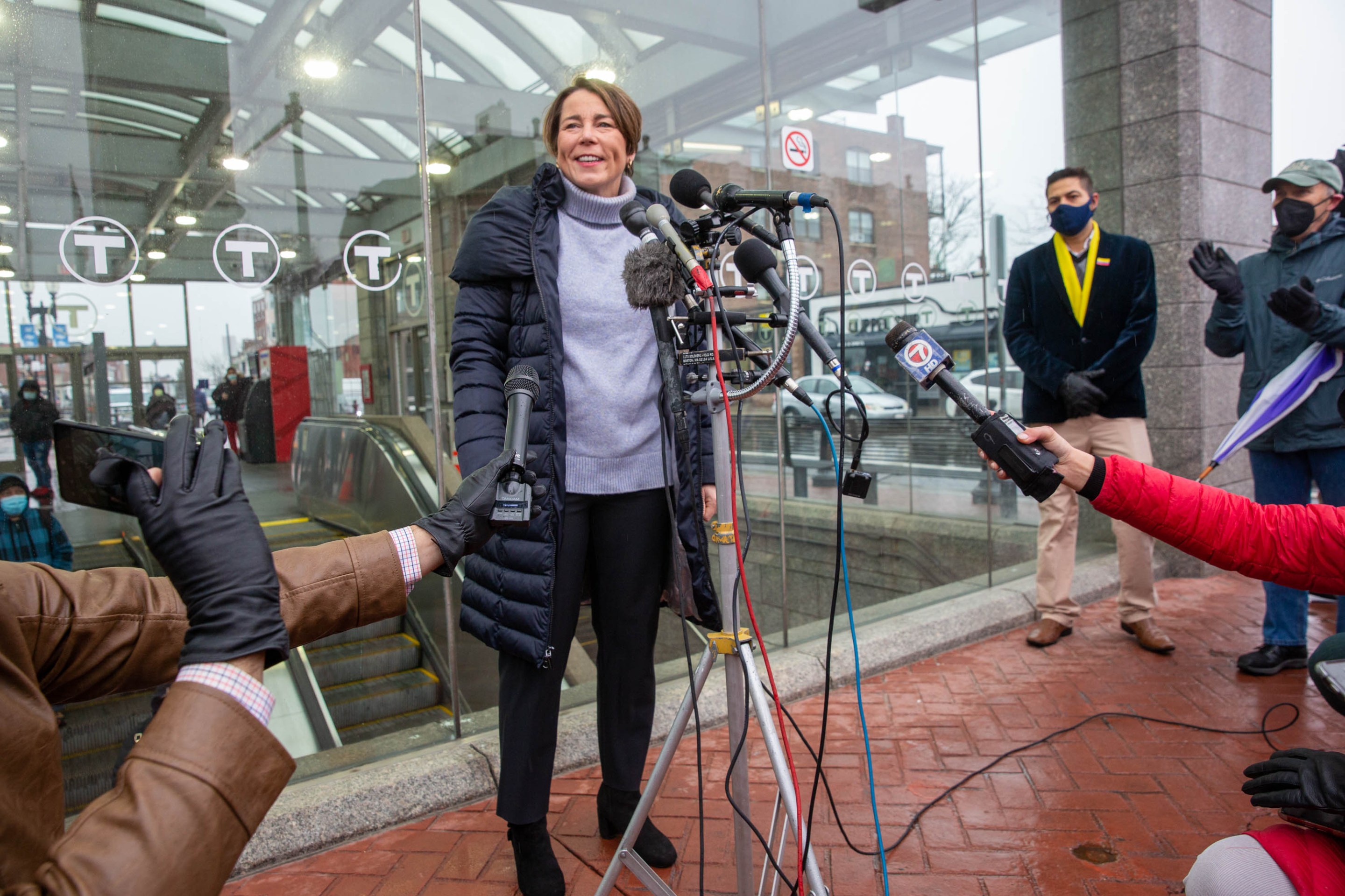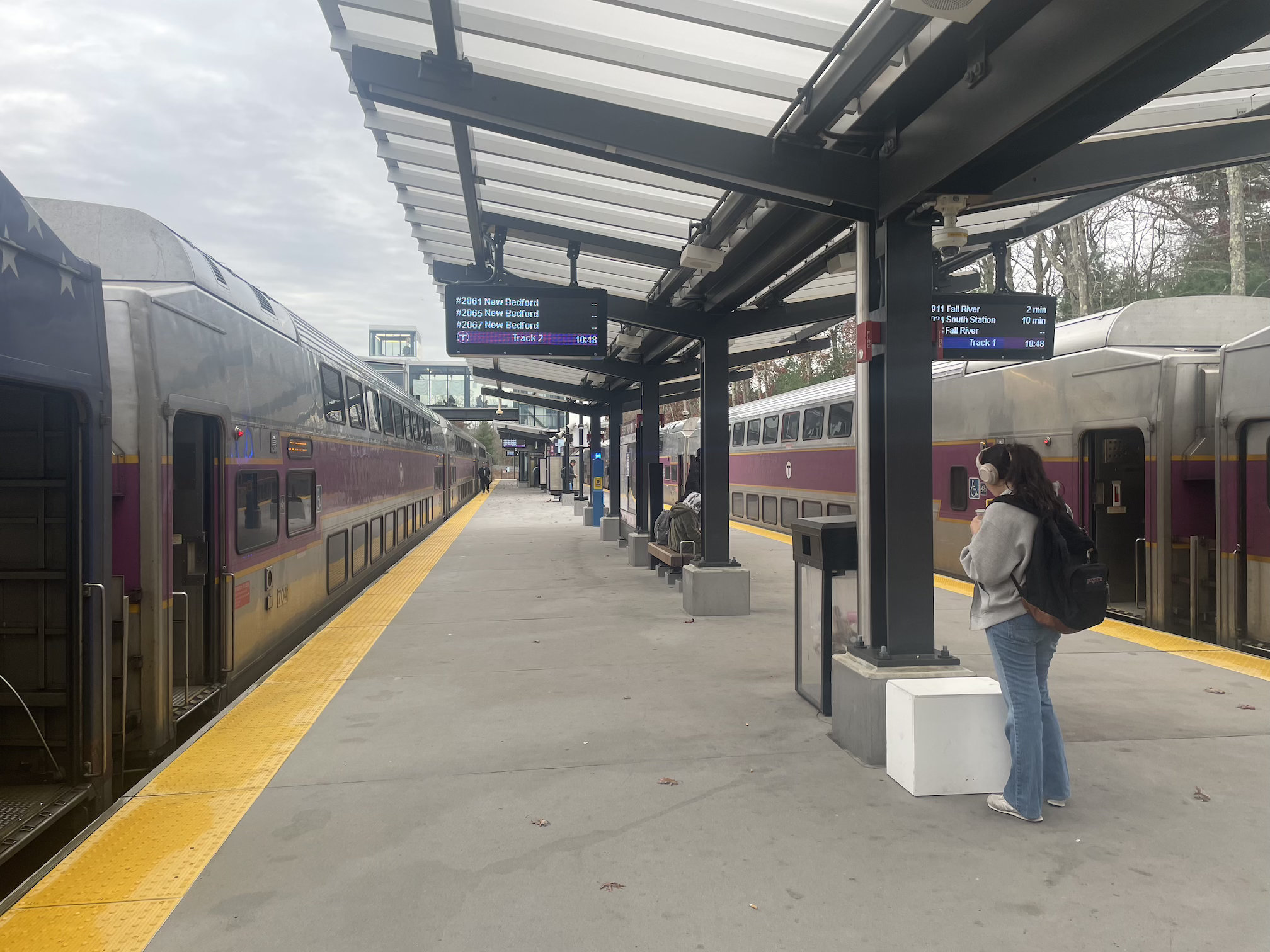Later this week, Gov. Maura Healey is expected to release her administration's first state budget proposal, which will be a key indicator of how she expects to implement her campaign promises.
This morning, at a YMCA in Lynn, the Governor announced one big-ticket idea from her budget plan: a $750 million tax relief package, the biggest component of which would be a new $600/year tax credit for families with children under 13, senior dependents over 65, and people with disabilities.
"We estimate that this will put more money in the pockets of 700,000 taxpayers in connection with more than a million dependents," said the Governor.
It's a big tax cut, but it still leaves plenty of room for the state to spend on the Governor's promised new investments in sustainable transportation. Last year, the state had a $1.9 billion budget surplus, and as of January, new revenues have started coming in from the new "Fair Share Amendment," which imposed a higher tax rate on incomes over $1 million and is expected to collect an additional $2 billion for the state next year.
While we wait for the details of how Gov. Healey wants to spend the rest of the state's money, here are three key budget items we'll be looking at:
Regional Transit Authority funding
During Gov. Charlie Baker's administration, the state steadily cut its budget to support its Regional Transit Authorities (RTAs), the transit agencies that operate bus routes outside of the MBTA's greater-Boston service area.
Growing transit ridership outside of the Boston region will need to be a key component in the new Governor's ambitious climate strategy, and the RTAs have also been a pioneers in implementing fare-free bus programs that the Governor endorsed during her campaign last summer.
So, while the MBTA has justifiably occupied a lot of the new Governor's attention during her first two months in office, the RTA line-item will be one of the key indicators to watch in the Governor's budget proposal.
RTAs typically rely on state funding to cover just over one-third of their collective operating budget, and in the current state budget, the state's 15 RTAs are getting $96.5 million in state operating assistance.
That's $2.5 million (or 2.7 percent) more than RTAs got in fiscal year 2021 and in 2020. But, because of inflation, the real value of the state's operating support is at its lowest level in 5 years.
Since 2020, the RTAs have muddled through state budget cuts with a surge of pandemic-related federal relief funding.
A number of RTAs – most notably Merrimack Valley Transit and the Worcester Regional Transit Authority – used those relief funds to suspend fare collections and boost ridership.
In a tacit acknowledgement of how successful those programs had been, Gov. Healey made a campaign promise last summer to lay out “a pathway to fare free buses throughout the Commonwealth.”
Nevertheless, as federal relief funding winds down, the RTAs will need additional assistance from the state to keep its popular fare-free programs going. And the agencies will need even more state funding in order to improve bus service, attract more riders, and ensure their regions can meet the state's climate goals.
New funds from the Fair Share Amendment
Gov. Healey's budget proposal should also give us an idea of how the state might allocate the additional $2 billion in revenue it expects to collect next year from the new Fair Share Amendment.
According to the text of the new law, money from the new taxes can only be used “quality public education and affordable public colleges and universities, and for the repair and maintenance of roads, bridges, and public transportation.”
But the constitutional amendment did not specify how the money should be shared among all of those priorities. Nor would the law prevent lawmakers from using the Fair Share money to fund transportation programs, then reducing existing transportation funding by an equal amount in order to pay for something entirely different.
MBTA operating support
Most of the MBTA's significant infrastructure problems – work on its aging subway tracks, new bus garages, its troubled new train contract – will need to be addressed through the agency's capital budget, which is separate from the state government's annual budget.
A clearer indication of how the new Governor plans to support the T (or not) will be in the state's annual "operating assistance" line-item for the MBTA, which helps shore up shortfalls in the agency's annual operating budget, which includes worker salaries, electricity, fuel, and other operating costs.
In the current fiscal year, the state is giving the MBTA $187.5 million to balance its budget.
Last year, the T’s Chief Financial Officer, Mary Ann O’Hara, warned MBTA board members that the agency was facing a “fiscal cliff” and forecast a $230 million budget shortfall in the upcoming fiscal year's budget. She also estimated that the shortfall would grow over time to become a $471 million deficit by 2027.
However, those estimates did not take into consideration the possibility of new revenue from the Fair Share Amendment, which could comfortably fill the agency's budget gap.
O'Hara's budget estimates also reflected current worker wages and salaries – which, as we've previously reported, are a likely factor in the T's struggles to recruit new workers.
If the Healey administration is serious about hiring 1,000 new workers for the T, her administration's budget will need to show a significantly bigger number in the MBTA operating assistance line-item to pay higher wages and fill the agency's budget gap.






